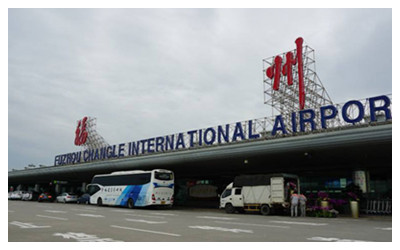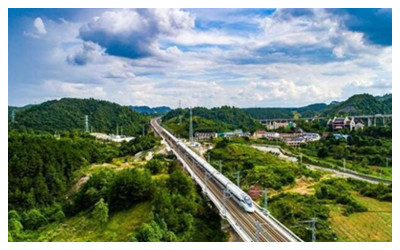Skype: neodalle-travel
Tel: +86 135 7447 2266
E-mail: sales@visitaroundchina.com

By Air
There are currently 6 major airports in Fujian Province. They are: Fuzhou Changle International Airport, Xiamen Gaoqi International Airport, Quanzhou Jinjiang International Airport, Wuyishan Airport, Sanmingsha County Airport, and Longyan Guanzhishan Airport. In 2019, Fujian Civil Aviation completed 36.1806 million passengers, an increase of 8.7%.
Visitors can get to Fuzhou by flights from Singapore, Kuala Lumpur, Osaka, Jakarta, Bangkok, New York, Tokyo, Nagoya, Jeju, Sydney, Bali Island, Krabi, Gangwon, Sabah, Qingzhou, Boston and Moscow. (The informational above is updated to May, 2019), and then choose airlines to reach other cities by flight, train, or long-distance bus.
By Railway
Since the 1950s, Fujian Railway began to develop. Since the 21st century, a railway network of "three verticals, six horizontals and nine rings" has been constructed in Fujian Province. On June 28, 2015, the Hefu High-speed Railway, the first high-speed railway with a design speed of 300km/h in Fujian Province, was officially opened for operation.
By the end of 2018, the railways built and under construction in Fujian Province include: Fengfu Railway, Yingxia Railway, Ganlong Railway, Meikan Railway, Zhangquan Railway, Wenfu High Speed Railway, Fuxia High Speed Railway, Longxia Railway, Xiangpu Railway, Xiamen-Shenzhen High-speed Railway, Nanlong Railway, etc. have been completed, basically forming a railway network. In 2019, the province's railway operating mileage was 3509.5 kilometers. In 2020, Fuping Railway and Quning Railway will be opened one after another. Among the railways under construction are: Pujian Longmei Railway, Fuxia High Speed Railway, Xingquan Railway.
Xiamen Railway Station , Xiapu railway station , Xiamen North Railway Station ;
Wuyishan Railway Station; Wuyishan North Railway Station
Nowadays, the total length of railways in Fujian reaches 1,565 kilometers, including Yingtan-Xiamen Railway, Hengfeng-Nanping Railway, Meizhou-Kanshi Railway and Ganzhou-Longyan Railway. These four major railways have been linked with the national railway network, and will increase to seven railways.
 By Bus
By Bus
By 2020, the length of highways opened to traffic in Fujian reached 58,286 kilometers (including 7,829 km of second-class highways), while the highway density hit 48.01 kilometers per 100 square kilometers. The expressway network and provincial-level trunk highway network have begun to take shape. All municipal cities are interconnected by expressways, allowing the formation of "4-hour traffic economic circle" from municipal cities to the capital city.
It’s no exaggeration to say “Fujian road is more challenging than Sichuan road ”.How could you imagine that two decades ago there were not any trace of highway around the province? Those who never come to Fujian will fail to identify with the natives’ delight for the running-through railway. Wonder how harsh could it be?--Just take a drive on Fujian’s road to seek out numerous tunnels through one cave after another. These tunnels indicate the towering relative height of mountains.
By Water
Faced with the situation of mountains surrounded and sea on one side, those who were reluctant to go northwards have become adventurous Fujian merchants, and later composed commercial legends of Southeastern Asia.
Dating back to the history, Fujian was the start of Marine Silk Road, and Quanzhou was once the largest port in the world. During that period, the “blessing boat” (a kind of boat named after Fujian, meaning “good luck”in Chinese) has played an undeniable important role in Zhenghe’s voyage to the western. Such kind of Fujian-made boat for sure has established brilliant achievements in the sailing era.
The coastline of Fujian extends 3,324 kilometers, accounting for 18.3% of that of China and coming second in the country. From north to south, there are Shacheng Port, Sanduao Port, Kemen Port, Mawei Port, Jiangyin Port, Meizhou Port, Quanzhou Port, Xiamen Port and Zhangzhou Port. The total length of inland navigation fairways reaches 3,955 kilometers, while the total number of quay berths within Fujian hit 485, including 58 10,000-ton level deepwater berths and boasting an annual handling capacity of approximate 100 million tons. Listed as one of ten major container ports of China, Xiamen Port has launched 36 international regular lines reaching more than 70 ports in the world, and has established business relationships with over 200 countries and regions. A trial direct line has also been launched between Fuzhou Port, Xiamen Port and Kaohsiung Port, allowing direct exchanges between costal regions of Fujian and Jinmen & Mazu...Gulangyu Island Ferry Schedule
 Ask Questions ?
Ask Questions ?